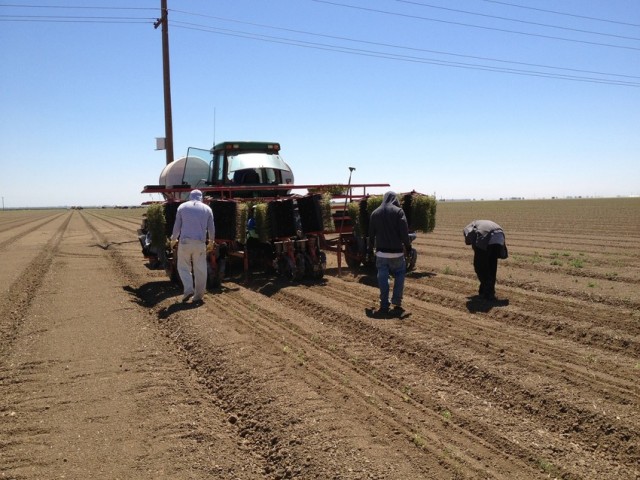Partnerships Address Problems Regionally
CCROPP partners with community organizations and also trains local residents to become more civically engaged through programs such as Powerful People Building Leadership for Healthy Communities.
For instance, in Stanislaus County CCROPP works directly with the Ceres Partnership for Healthy Children and concerned residents to help change the tide of obesity. Lourdes Perez of Ceres Partnership has been instrumental in working with the Ceres Unified School District to establish a revolving weekly farm stand at each of the five elementary schools. The farmer pays a rental fee to the school's PTA and in return, is able to sell to the locals who want fresh produce. At Ceres' Central Valley High, students are now running a 1.6-acre farm. The vegetables grown on the farm are served in the high school cafeteria.
All five elementary schools in Ceres now have clean, free drinking water stations thanks in part to concerned parents who worked with Perez and the school district. Those parents attended a Powerful People training session and are now on the school's wellness committee.
Clean, free drinking water in schools is not a given, especially during mealtime, according to a 2009 report by California Food Policy Advocates on Improving Water Consumption in Schools. The report highlights the fact that many towns in the Central Valley also grapple with polluted tap water.
Report Examines Challenges CCROPP Faces
A recent Robert Wood Johnson Foundation report found that the eight counties of San Joaquin Valley rank 47th or below in California's 58 counties, when looking at indicators such as obesity, air and water quality, access to recreational activity, access to healthy foods and the pervasiveness of fast food restaurants.
"All the counties that we work with are pretty high up in terms of challenges," Banks-Bey said.
In Fresno County 29 percent of adults are obese, compared with 24 percent statewide. In Tulare County, which ranks last in the report, 31 percent of adults are obese. Access to recreational activities is also extremely limited in Tulare County.
CCROPP Director Genoveva Islas-Hooker isn't surprised by the high rates of obesity that the report outlines in the San Joaquin Valley.
The poor air quality, the challenges with safe drinking water and the lack of parks all create barriers to people being out and physically active, she said.
"It makes it very clear to me about how we have to continue challenging social, structural and environmental issues that are actually engineering people to make these choices."
Access to Recreation, Fresh Produce is Key
Kids in a neighborhood of Southeast Fresno didn't have a safe park to play in until CRROPP and concerned parents worked with the school district a few years ago to unlock the gates at Borroughs Elementary in the summer. Now kids have access to a safe place to play.
In Ceres, CCROPP partnered with the school district to implement the Walking School Bus program. Parents walk the bus routes every day and pick up kids at different stops; close to 200 students are participating.
CCROPP also has worked with community organizations to convince convenience stores to stock local produce when there isn't a nearby grocery store. In another example of creating access, CCROPP offers a 10-step guide on how to get produce venders at flea markets, swap meets and farmers markets to accept government assistance payment options like WIC -- the federally funded Women, Infants and Children food and nutrition program.
Sodas a Major Contributor to Obesity
One of the biggest challenges CCROPP faces is soda consumption among children. "The link to obesity is very clear," said Banks-Bey, citing a 2009 report called Bubbling Over released by the UCLA Center for Health Policy Research and the California Center for Public Advocacy.
The report found that 62 percent of California teens and 41 percent of children between ages two and 11 drink at least a soda a day, while 13 percent of 12- to 17-year-olds drink three or more sodas a day. A quarter of California adults drink at least one soda or another type of sweetened beverage per day.
Claudia Corchado, CCROPP's lead in Merced County has tackled this problem along with the United Way. For the past two years, Corchado has worked with the Junior Giants baseball program in Atwater to sell only healthy drinks at its games. "This is their second soda-free summer," she said. "We're hoping that the idea catches on to other youth organizations."
CCROPP also partnered with First 5 of Merced County to teach parents about the pitfalls of sugary drinks. Kids received a bilingual book about Potter the Otter, who only drinks water.
"What surprised me the most was the lack of knowledge among parents about the link between sugary drinks and obesity," Corchado said.
There are also economic considerations, she said. A two-liter soda is cheaper than a 16-ounce bottle of water at the corner store or the liquor store.
